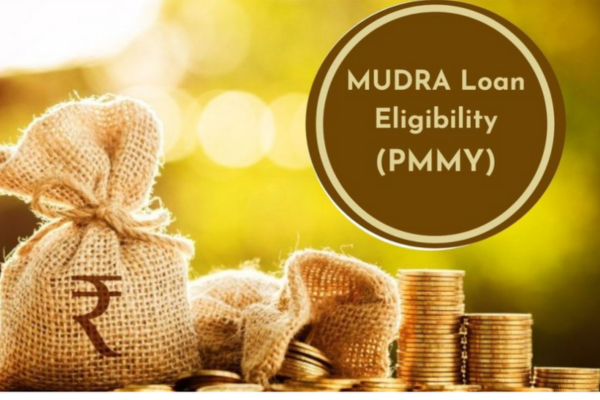The Pradhan Mantri Mudra Yojana (PMMY) is a flagship scheme launched by the Government of India on April 8, 2015, under the leadership of Prime Minister Narendra Modi. The primary objective of this scheme is to provide financial support to small and micro-enterprises, which are often referred to as the backbone of the Indian economy. The scheme aims to empower the unfunded and unbanked sections of society by providing them with access to institutional credit. PMMY is implemented through the Micro Units Development and Refinance Agency (MUDRA) Bank, which operates as a subsidiary of the Small Industries Development Bank of India (SIDBI).
Table of Contents
Objectives of Pradhan Mantri Mudra Yojana

The Pradhan Mantri Mudra Yojana has several key objectives:
- Financial Inclusion: One of the primary goals of PMMY is to bring the unbanked and underbanked sections of society into the formal financial system. By providing loans to small and micro-enterprises, the scheme aims to ensure that these businesses have access to credit at affordable rates.
- Promotion of Entrepreneurship: PMMY seeks to promote entrepreneurship, particularly among women, Scheduled Castes (SCs), Scheduled Tribes (STs), and Other Backward Classes (OBCs). By providing financial support, the scheme encourages individuals to start their own businesses and become self-reliant.
- Employment Generation: Small and micro-enterprises are significant contributors to employment generation in India. By supporting these enterprises, PMMY aims to create job opportunities, particularly in rural and semi-urban areas.
- Economic Growth: The scheme aims to contribute to the overall economic growth of the country by fostering the development of small and micro-enterprises. These enterprises play a crucial role in the GDP and are essential for the sustainable development of the economy.
Key Features of Pradhan Mantri Mudra Yojana
PMMY offers several features that make it a unique and effective scheme for supporting small and micro-enterprises:
- Loan Categories: PMMY offers loans under three categories, known as Shishu, Kishor, and Tarun, based on the stage of development and funding needs of the enterprise.
- Shishu: Loans up to ₹50,000 for small businesses that are in their initial stages.
- Kishor: Loans ranging from ₹50,001 to ₹5 lakh for businesses that have already started operations and are looking to expand.
- Tarun: Loans ranging from ₹5,00,001 to ₹10 lakh for well-established businesses that require additional funds for further expansion.
- Eligibility Criteria: The scheme is open to all Indian citizens who are engaged in small and micro-enterprises. There is no restriction on the type of business, and individuals, sole proprietors, partnership firms, and private limited companies can apply for loans under PMMY.
- Interest Rates: The interest rates on Mudra loans are determined by the lending institutions, which include banks, non-banking financial companies (NBFCs), and microfinance institutions (MFIs). However, the rates are generally lower than those offered by informal sources of credit, making it easier for small businesses to access affordable financing.
- Collateral-Free Loans: One of the most significant features of PMMY is that it offers collateral-free loans up to ₹10 lakh. This eliminates the need for borrowers to provide any security or guarantee, making it easier for small and micro-enterprises to access credit.
- Repayment Tenure: The repayment tenure for Mudra loans varies depending on the category of the loan and the nature of the business. Generally, the repayment period ranges from 3 to 5 years, with flexible repayment options.
- Application Process: The application process for PMMY is simple and hassle-free. Borrowers can apply for loans through any of the participating financial institutions, including public sector banks, private sector banks, regional rural banks, and cooperative banks. The application can be submitted online or offline, depending on the preference of the borrower.
Implementation of Pradhan Mantri Mudra Yojana
The implementation of PMMY is carried out through the MUDRA Bank, which acts as a refinancing agency for the loans disbursed under the scheme. The MUDRA Bank provides refinance support to banks, NBFCs, and MFIs, which in turn disburse loans to eligible borrowers. The scheme is implemented in collaboration with various stakeholders, including state governments, financial institutions, and industry associations.
- Role of MUDRA Bank: The MUDRA Bank plays a crucial role in the implementation of PMMY. It provides refinance support to lending institutions, ensuring that they have sufficient funds to disburse loans to small and micro-enterprises. The MUDRA Bank also sets guidelines and standards for the disbursement of loans, ensuring that the process is transparent and efficient.
- Role of Financial Institutions: Banks, NBFCs, and MFIs are the primary channels through which Mudra loans are disbursed. These institutions are responsible for evaluating loan applications, disbursing loans, and monitoring the repayment process. They also provide financial literacy and business development services to borrowers, helping them to manage their businesses effectively.
- Role of State Governments: State governments play a supportive role in the implementation of PMMY. They work closely with financial institutions to identify potential borrowers and promote the scheme at the grassroots level. State governments also organize awareness campaigns and workshops to educate people about the benefits of the scheme and encourage them to apply for loans.
- Role of Industry Associations: Industry associations, such as the Confederation of Indian Industry (CII) and the Federation of Indian Chambers of Commerce and Industry (FICCI), also play a role in promoting PMMY. They work with the government and financial institutions to create awareness about the scheme and provide support to small and micro-enterprises.
Impact of Pradhan Mantri Mudra Yojana
Since its launch, PMMY has had a significant impact on the Indian economy, particularly in the small and micro-enterprise sector. The scheme has helped millions of entrepreneurs to start and expand their businesses, creating employment opportunities and contributing to economic growth.
- Financial Inclusion: PMMY has played a crucial role in promoting financial inclusion by providing access to credit to the unfunded and unbanked sections of society. According to the Ministry of Finance, over 30 crore loans have been disbursed under the scheme, with a total loan amount exceeding ₹15 lakh crore. This has helped to bring a large number of people into the formal financial system.
- Promotion of Entrepreneurship: The scheme has encouraged entrepreneurship, particularly among women and marginalized communities. A significant proportion of Mudra loans have been disbursed to women entrepreneurs, helping them to start and expand their businesses. This has not only empowered women but also contributed to the economic development of their families and communities.
- Employment Generation: PMMY has been instrumental in creating employment opportunities, particularly in rural and semi-urban areas. Small and micro-enterprises supported by the scheme have generated millions of jobs, helping to reduce unemployment and underemployment in the country.
- Economic Growth: The scheme has contributed to the overall economic growth of the country by fostering the development of small and micro-enterprises. These enterprises play a crucial role in the GDP and are essential for the sustainable development of the economy. By providing financial support to these enterprises, PMMY has helped to boost economic activity and promote inclusive growth.
Challenges and the Way Forward
While PMMY has been successful in achieving its objectives, there are still some challenges that need to be addressed to ensure the long-term sustainability of the scheme.
- Awareness and Outreach: Despite the widespread implementation of the scheme, there is still a lack of awareness among potential borrowers, particularly in rural and remote areas. More efforts are needed to promote the scheme and educate people about its benefits.
- Credit Risk: The collateral-free nature of Mudra loans poses a credit risk for lending institutions. To mitigate this risk, it is essential to strengthen the credit appraisal process and provide financial literacy and business development services to borrowers.
- Monitoring and Evaluation: Effective monitoring and evaluation are crucial for the success of PMMY. There is a need to establish a robust mechanism for tracking the performance of loans and ensuring that the funds are used for the intended purpose.
- Sustainability of Enterprises: While PMMY provides financial support to small and micro-enterprises, it is essential to ensure the sustainability of these enterprises. This can be achieved by providing them with access to markets, technology, and skill development programs.
A Complete Guide to Applying for Mudra Loan in 2025
Applying for a Mudra loan in 2025 is a straightforward process, but it requires careful preparation and understanding of the requirements. Here’s a step-by-step guide to help you navigate the application process:
Step 1: Determine Your Eligibility
Before applying for a Mudra loan, ensure that you meet the eligibility criteria:
- Indian Citizenship: You must be an Indian citizen.
- Business Type: Your business should fall under the category of small or micro-enterprise.
- Loan Purpose: The loan should be used for business purposes, such as starting a new business, expanding an existing one, or purchasing equipment.
Step 2: Choose the Right Loan Category
Based on your business needs, select the appropriate loan category:
- Shishu: For startups and small businesses requiring up to ₹50,000.
- Kishor: For businesses needing between ₹50,001 and ₹5 lakh for expansion.
- Tarun: For established businesses requiring between ₹5,00,001 and ₹10 lakh for further growth.
Step 3: Prepare the Required Documents
Gather the necessary documents to support your loan application:
- Identity Proof: Aadhaar card, PAN card, or voter ID.
- Address Proof: Utility bills, rental agreement, or Aadhaar card.
- Business Proof: Business registration certificate, GST registration, or trade license.
- Bank Statements: Recent bank statements for the past six months.
- Business Plan: A detailed business plan outlining your business model, revenue projections, and how you plan to use the loan.
Step 4: Select a Lending Institution
Choose a financial institution that participates in the PMMY scheme. This can be a public sector bank, private sector bank, regional rural bank, cooperative bank, NBFC, or MFI. You can apply online through the institution’s website or visit a branch in person.
Step 5: Submit the Application
Fill out the loan application form provided by the lending institution. Ensure that all the information is accurate and complete. Attach the required documents and submit the application either online or at the branch.
Step 6: Await Approval
Once your application is submitted, the lending institution will evaluate your application based on your creditworthiness, business plan, and repayment capacity. This process may take a few days to a few weeks, depending on the institution.
Step 7: Loan Disbursement
If your application is approved, the loan amount will be disbursed to your bank account. Ensure that you use the funds for the intended business purposes and keep track of your expenses.
Step 8: Repayment
Make timely repayments as per the agreed schedule. Timely repayment will help you build a good credit history and may make you eligible for future loans.
Conclusion
The Pradhan Mantri Mudra Yojana (PMMY) is a transformative scheme that has the potential to revolutionize the small and micro-enterprise sector in India. By providing access to credit to the unfunded and unbanked sections of society, the scheme has empowered millions of entrepreneurs and contributed to the economic development of the country. However, to ensure the long-term success of the scheme, it is essential to address the challenges and continue to innovate and improve the implementation process. With the right strategies and support, PMMY can play a crucial role in achieving the vision of a self-reliant and inclusive India.
Applying for a Mudra loan in 2025 is a straightforward process, but it requires careful preparation and understanding of the requirements. By following the steps outlined in this guide, you can successfully apply for a Mudra loan and take your business to new heights. Whether you are a startup looking for initial funding or an established business seeking expansion, PMMY offers a range of loan options to meet your needs. Take advantage of this opportunity and contribute to the growth and development of the Indian economy.
References
Website: MUDRA

